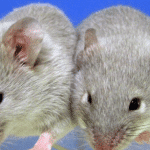The arrival of avian influenza, commonly known as bird flu, in the remote and pristine wilderness of Antarctica marks a concerning development in the spread of wildlife diseases globally. The path by which this virus reached the ends of the Earth is not just a singular event but is indicative of the interconnectedness of ecosystems and the far-reaching impact of human activity on wildlife and natural habitats.
Avian flu viruses, which primarily affect birds, can spread through migratory pathways, and Antarctica, with its seasonal influx of migratory bird species, was previously untouched by this pathogen. The continent serves as a critical breeding ground for various species of migratory birds, including several types of seabirds that spend part of the year in regions where the avian flu is present.
The transmission of avian flu to Antarctica likely occurred through these migratory birds, which can travel thousands of kilometers across continents and oceans. These birds, such as skuas and petrels, could have picked up the virus from infected populations elsewhere before arriving in Antarctica to breed. The virus can spread through direct contact with infected birds, through their saliva, nasal secretions, and feces, or via indirect contact with contaminated environments.
The presence of the avian flu virus in such a remote location is also an indicator of the changing patterns of wildlife migration and disease distribution, potentially altered by climate change. As global temperatures rise, migratory birds may change their traditional routes, coming into contact with different species and ecosystems and potentially introducing pathogens into new areas.
Human activity in Antarctica, although regulated and limited, could also play a role in the spread of diseases. Researchers, tourists, and support personnel traveling to and from the continent could inadvertently introduce pathogens through contaminated clothing or equipment.
The discovery of the avian flu in Antarctica raises concerns about the health of bird populations there, as the continent’s isolation has left its wildlife with little to no immunity to such diseases. It also underscores the importance of stringent biosecurity measures to protect Antarctic wildlife.
Monitoring and research efforts are critical in understanding the impact of the avian flu in Antarctic ecosystems and in developing strategies to mitigate the spread of such diseases. The scientific community, along with international regulatory bodies, must work together to ensure that the unique and vulnerable ecosystems of Antarctica are preserved against the growing threat of global disease transmissions.














